Why Growing Apple Seeds is a Rewarding Experience
Caring for an apple tree with seeds is more than a gardening job; It is a journey of endurance and satisfaction. Unlike store-bought trees, growing a tree from an apple seed connects you to the life of nature in a deeper way. Watching the first tender buds appear gives an accomplishment that no instant gratification can match.
This process is not just about planting a tree; it’s about loving a living symbol of resilience. Every fruit carries a secret—its genetics can surprise you with a unique flavor or quality. Learning how to grow apple seeds provides an unparalleled level of fun and creativity for any gardening enthusiast. Fruit from a backyard orchard or single shady tree goes far beyond harvest.
The Basics of Starting Your Apple Tree Journey
Preparation is needed to begin this effort. Not all apple seeds are apt to germinate without some encouragement. The process of stratification mimics winter conditions and helps to awaken seed potential. Understanding these steps is the foundation for learning how to grow apple seeds.
Where seeds are planted matters. They need a good balance of sunlight, wind protection, and soil that drains well. Some folks like to kick-start seeds in a controlled indoor setting while some like to put them right into the nutrient-rich earth. Each way demands attention, especially keeping the watering regular and making sure the soil can breathe.
As you grow your apple orchard, remember: this is a long-term commitment. Trees from seed will take years to bear fruit, but the journey itself is the most satisfying. By starting with healthy seeds and following best practices, you are setting the stage for a thriving planting and perennial heritage in your garden.
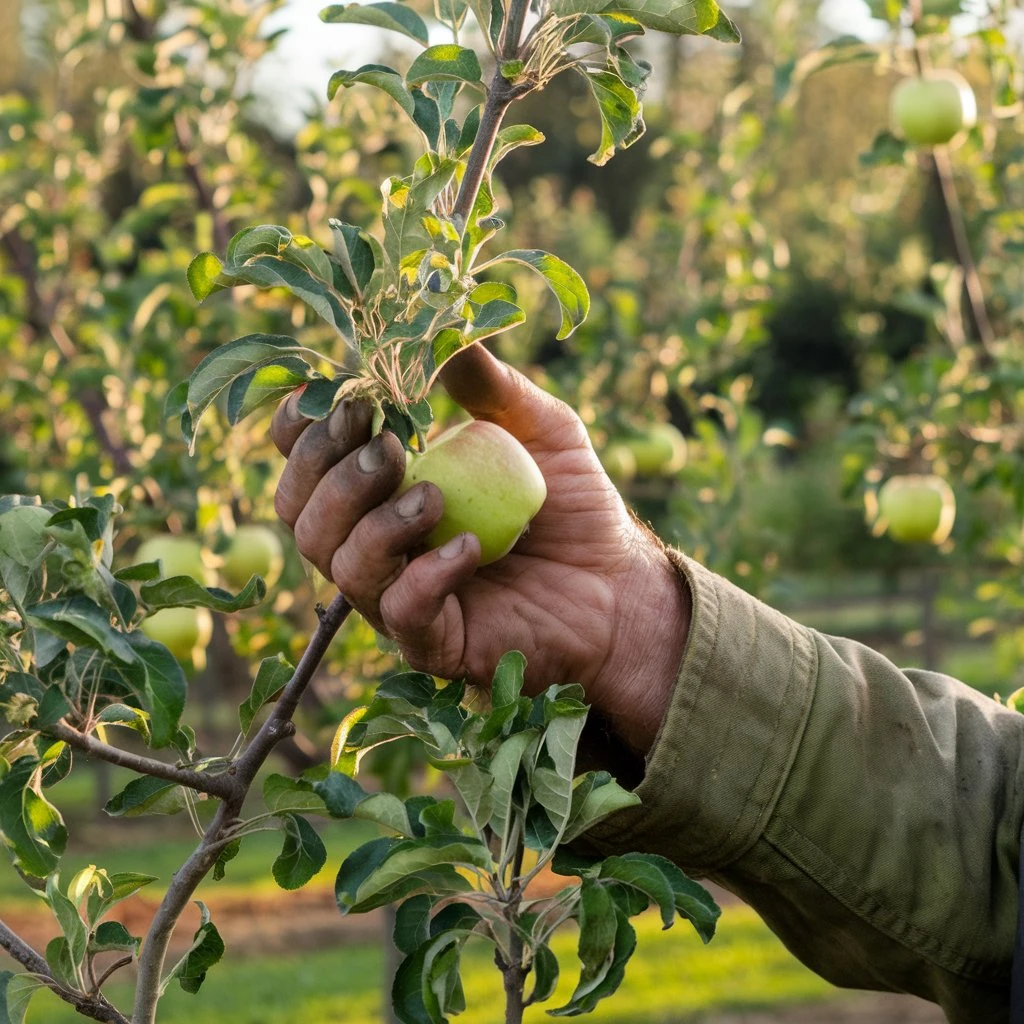
Choosing the Right Apple Seeds
Can Any Apple Seed Grow?
All apple seeds aren’t the same in farming. Yes, a seed from an apple you buy at the store can grow, but what it grows into is usually a surprise. Most apples are a mix. That means the seeds have a bunch of genes from the mother and father seeds. This mix-up leads to trees, or even trees with small, not-so-nice apples that have a hard time growing.
For those learning how to grow an apple tree from seed, it’s important to remember that patience and experimentation are key. Starting with pedigrees or organic apple seeds increases the chances of success. Unlike hybrids, pedigrees retain their natural characteristics, giving them a better chance of successful growth and desired fruit production.
Best Apple Varieties for Home Growing
When choosing seeds, consider varieties best suited for the home garden. Classic options like Fuji, Gala and Honeycrisp are favorites because of their robust flavors and customizability. Macintosh or Northern Spy are good choices for cold climates, as they can withstand harsh winters. Anna or Dorset Goldens do particularly well in warmer climates.
Choosing the right variety is more than preference—it’s an investment in your tree’s future. Some apples are highly resistant, making budding ones vulnerable. If you are eager to learn how to grow apple seeds with more confidence, consider getting seeds from local orchards or seed exchange programs.
The Role of Climate and Soil in Seed Selection
Understanding your local climate is essential to learning how to grow an apple tree from seed. Apples generally require a period of cooling to germinate, so tropical seeds can struggle without intervention. In the tropics, nature takes care of this process during the winter, giving the seeds a natural boost.
Good soil plays an equally important role. Apple seeds thrive in soil that drains nicely and packed with organic stuff. Try to hit a bit of acidity, around 6.0 to 6.8, and check your ground’s pH values. Amending the soil with compost or natural fertilizer provides the young tree with the nutrients it needs.
With careful consideration of variety, climate compatibility, and soil conditions, you lay the foundation for a thriving apple orchard. Thoughtful preparation will make the journey from seed to plant as seamless as possible.
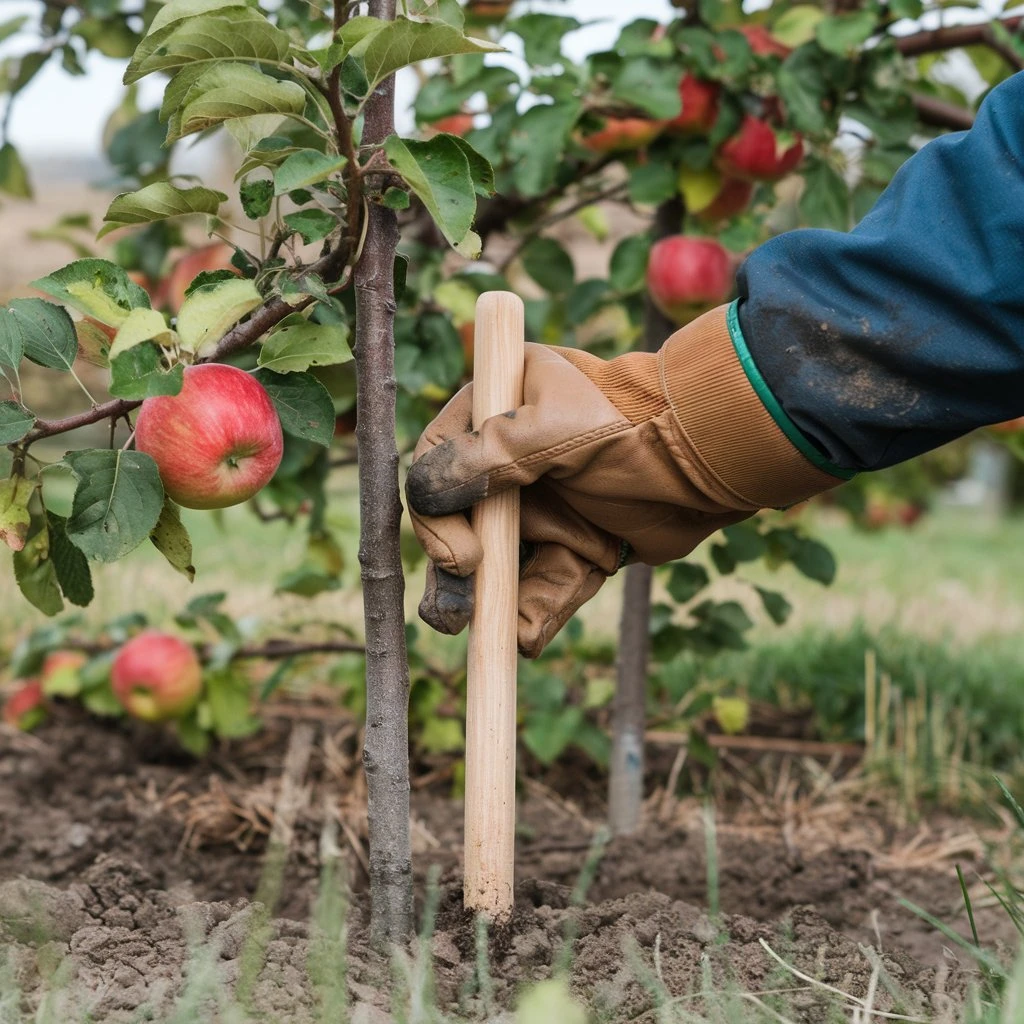
Preparing Apple Seeds for Germination
How to Extract Seeds from an Apple
The first step in planting an apple tree is to remove the seeds from the mature, healthy seeds. Choose fresh apples from organic or heirloom to increase your chances of success.Gently cut the apples in half and expose the core revealed. Carefully remove the seeds with a knife or small pair of scissors, making sure the outer shell remains intact.
Once removed, rinse the seeds thoroughly under cold water to remove any sticky residue. This residue can attract mold, which can inhibit germination. Pat the seeds dry with a clean towel ready for further decoration. Understanding how to grow apple seeds begins with careful preparation to ensure a solid foundation during this time.
The Importance of Stratification: Mimicking Winter Conditions
Stratification is an important process for successfully how to grow an apple tree from seed. In nature, seeds overwinter in the soil, where cold temperatures break dormancy and activate growth pathways. Mimicking this process is essential for germination.
Put the fresh seeds on wet paper towels, keep some distance to stop mold. Tuck the towels, keep in a tight plastic bag. Cool the bag from 32°F to 41°F (0°C to 5°C) for 6–8 weeks. This cool phase copies winter’s vibe, alerting the seed that sprouting doesn’t pose a risk..
Check the seeds regularly to make sure the towel stays moist without being too wet. To master how to grow apple seeds, proper loading is the key to success.
Step-by-Step Guide to Prepping Your Seeds
- Seed Selection: Start with seeds from a high-quality apple variety suited to your climate.
- Cleaning and Drying: Rinse and dry the seeds to remove contaminants.
- Cold Stratification: Prepare the seeds for germination by simulating winter with the method above.
- Pre-Germination Check: After stratification, inspect the seeds. Those that have started sprouting are ready for planting.
If you follow these steps, you will set up seeds that grow well. Proper seed preparation is an important step in understanding how to grow an apple tree from seed and offers a greater chance of success in the journey from seed to seed
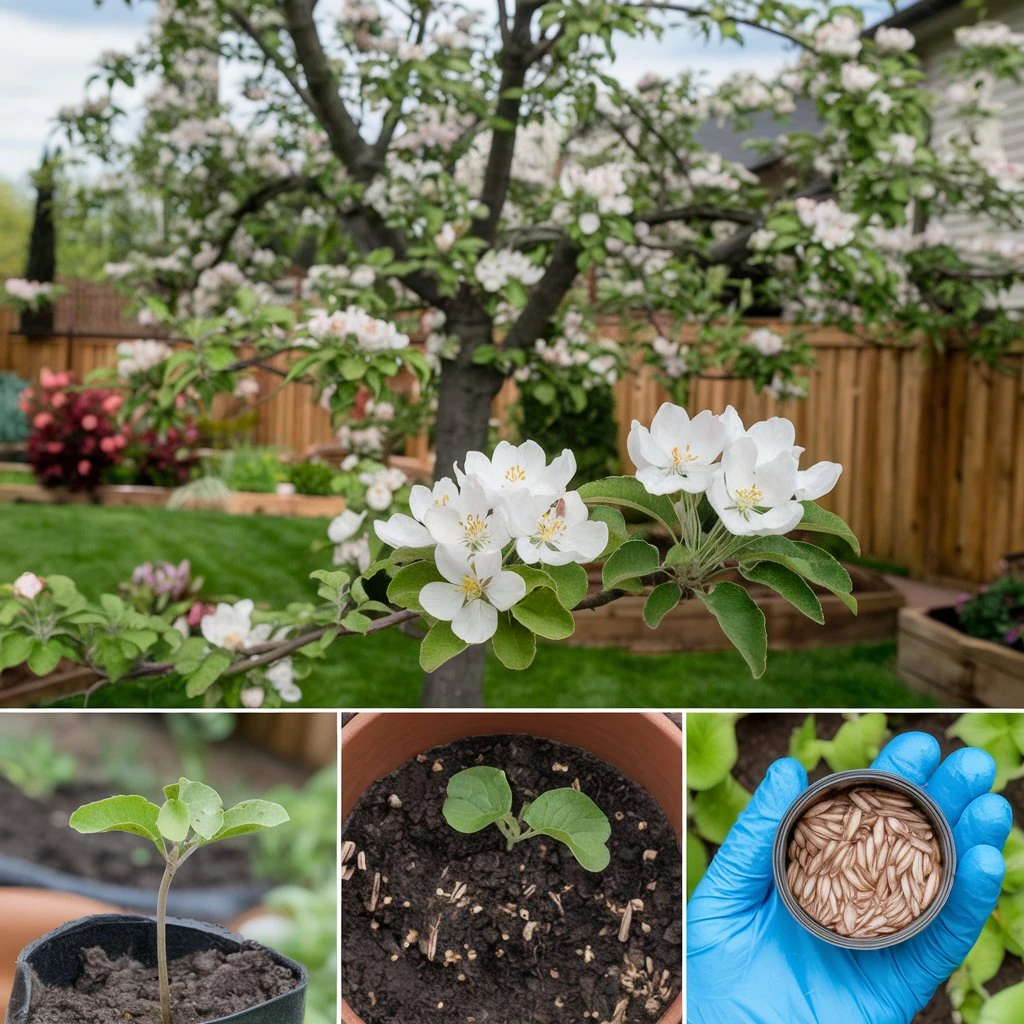
Planting Your Apple Seeds
Selecting the Appropriate Soil Blend for Maximum Growth
The success of a beautiful apple tree depends on the quality of the soil. Seeds need a well-drained, nutrient-rich soil to germinate and thrive.A soil mix of loam, compost and perlite creates ideal conditions that retain water and drain this excess water This balance improves growth and helps root rot.
Adding organic stuff like mature weeds or leaf compost improves the earth by offering key minerals. Soil that’s just a touch sour, with a pH between 6.0 and 6.8, is perfect for apple trees. Check your soil before you plant; it’s gotta meet certain standards. This step is key, apple seeds gotta grow, and preparing the soil well is a must.
Choosing the Ideal Pot or Garden Location
It matters where you plant them, whether in pots or in the garden itself. Make sure the potted plant has adequate moisture to avoid damp roots. A depth of at least 12 inches promotes more root growth. Pots made of ceramic or clay are good choices, as they provide good aeration to the roots.
Pick a spot in the garden that gets lots of sunshine and is shielded from the wind. For the best growth, apple trees need between 6 to 8 hours of direct sunlight daily. Avoid areas where water tends to accumulate, as this can drown small roots. Learning how to grow an apple tree from seed means a balance of sunlight, drainage and protection.
Tips for Proper Seed Depth and Space
When planting, place each apple seed about half an inch below the soil surface. Lightly cover the seeds, making sure they are not too tightly packed. Spacing is equally important—if you plant multiple seeds, space them at least 12 inches apart to prevent root competition as they grow.
After planting, water the soil gently but thoroughly. Keeping the soil moist is key to germination, but don’t swallow it. This can cause fungal problems. When learning how to grow apple seeds, check the soil moisture levels and make sure your seeds are not too close together to grow a healthy plant.
Thoughtful planting practices will help turn your seeds into lush, undisturbed seeds, laying the foundation for a future filled with sprouting apple trees.
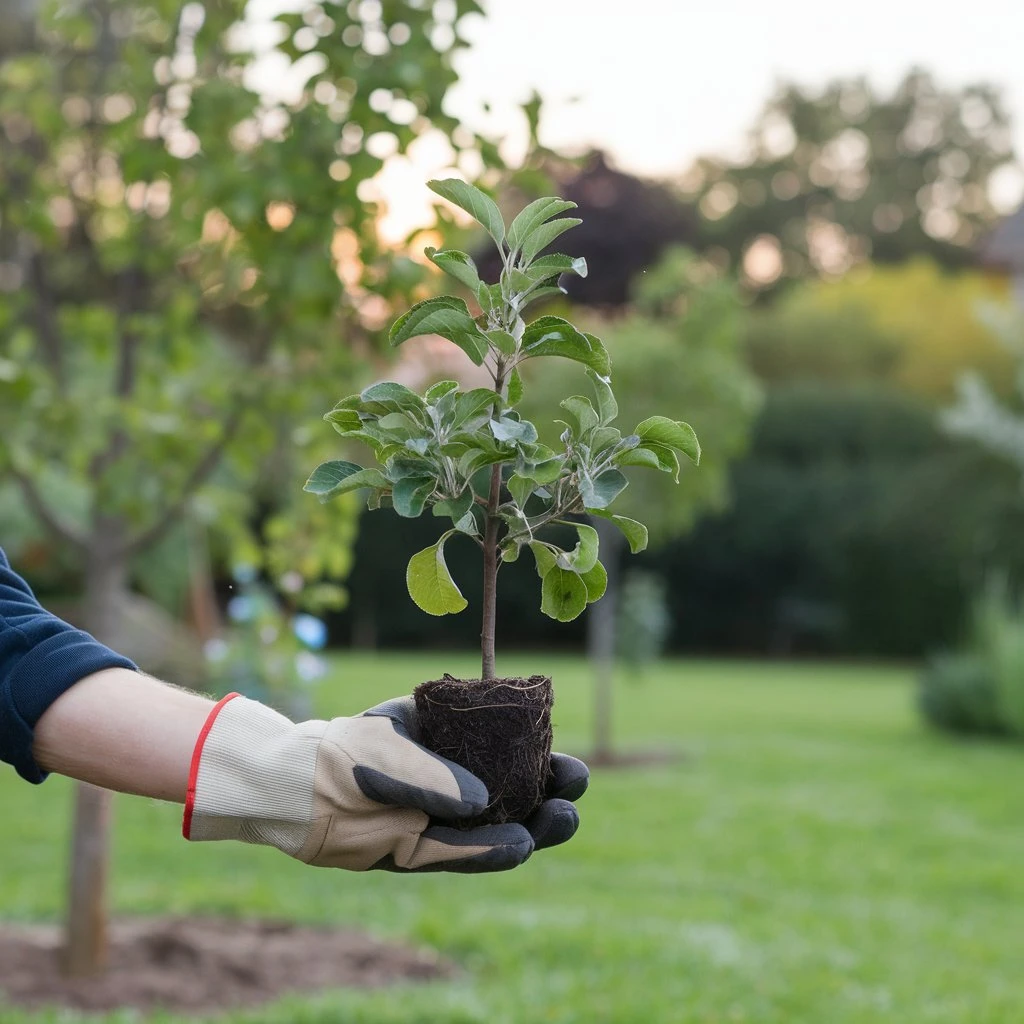
Caring for Apple Seedlings
Watering: Finding the Right Balance
Watering small apples requires precision. Overwatering can drown weak roots, while underwater risks stunting growth. Maintaining balance is essential to maintaining healthy plants.
After planting, make sure the soil stays moist at all times to prevent waterlogging. Check the topsoil inches regularly; If it feels dry, it’s time to water. Use gentle irrigation methods, such as a spray bottle or a watering can with narrow water to avoid interference from delicate seedlings.
Seasonal changes also affect water demand. Evaporation accelerates during the warmer months, requiring frequent watering. In cooler climates, seedlings need less water. Learning how to grow apple seeds successfully involves staying attuned to the plant’s changing needs
Ensuring Proper Sunlight for Young Apple Plants
Sunlight plays a vital role in the growth of strong apple seedlings. Position your seedlings in a location where they receive 6–8 hours of indirect sunlight daily. Avoid harsh, direct sunlight that can scorch tender leaves.
Seedlings growing indoors do well on a bright windowsill or under a grow light that imitates daylight. If you’re growing seedlings outside, start them off in some shade. After a few days, slowly move them into the full sun.Understanding how to grow an apple tree from seed involves optimizing light exposure during these formative stages.
Guidelines for Timing and Techniques in Thinning or Transplanting Seedlings
As your seedlings mature, it is important to thin them out so that only the hardiest plants can grow. When the seedlings reach about 2-3 inches in length and have the first true leaves, look at how healthy they are. Select the healthiest-looking seedlings and carefully remove the tender ones, cutting at the soil so as not to clog nearby roots.
Transplanting is another milestone in how to plant an apple tree from seed. Once the seedlings are 4–6 inches tall and have a few sets of leaves, they’re ready for larger containers or a garden bed. When performing a transplant, be sure to handle the plants carefully by the leaves rather than the stem to avoid causing any harm. Create new pots or garden areas using nutrient-dense, well-draining soil, and ensure that the seedlings are planted at the same depth as they were in their original containers.
With continued care and attention, your seedlings will grow into sturdy trees, paving the way for apple trees to flourish. Consideration of water, proper use of sunlight, and appropriate thinning methods are the keys to successful growth.
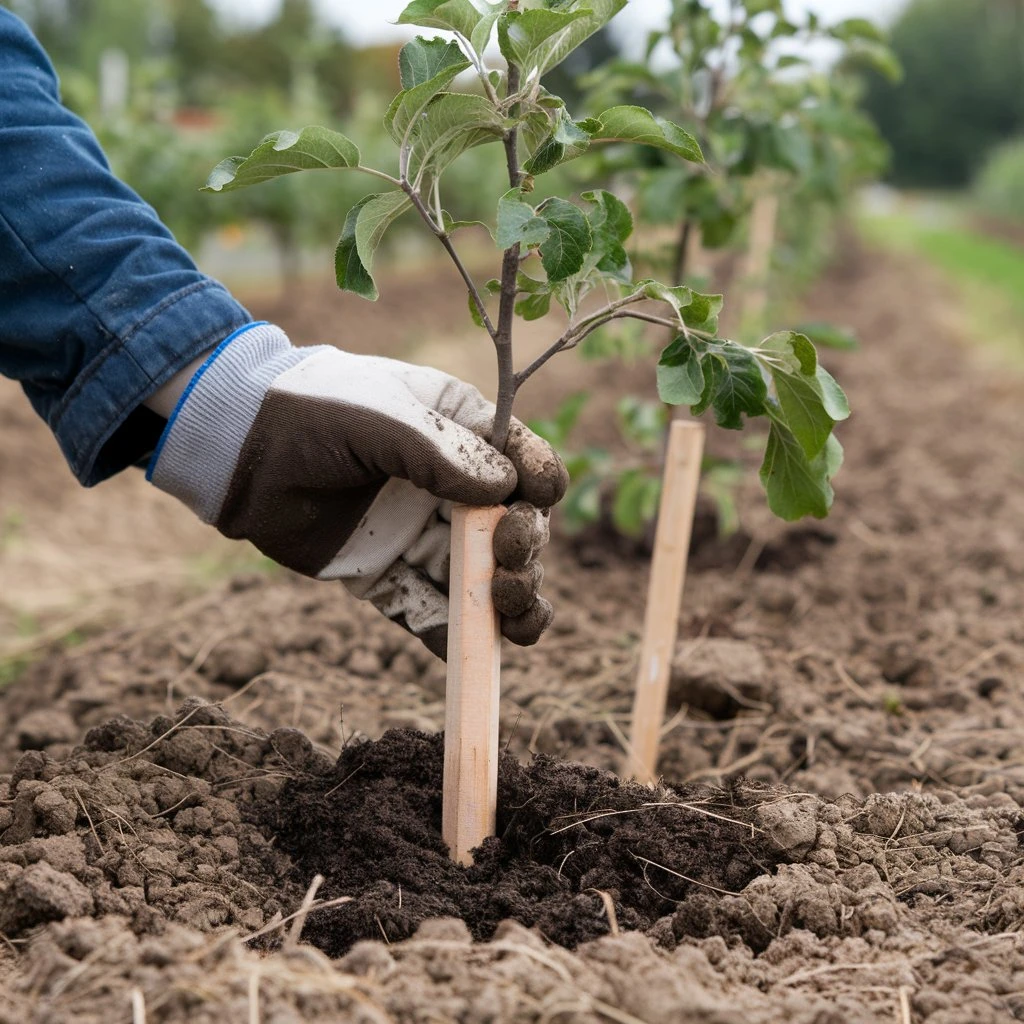
Common Challenges and How to Overcome Them
Dealing with Pests: Protecting Young Apple Trees
Insects are a common barrier to young apple trees. Aphids, spider mites and caterpillars are notorious for attacking delicate seedlings, often damaging foliage or stunting growth. Early detection is key to protecting your trees. Check leaves and stems regularly for discoloration, holes, or sharp objects.
Introduce natural deterrents like ladybugs or predatory insects to manage aphid populations without chemicals. For severe cases, use organic insecticidal soap or neem oil to safely eliminate pests. Physical barriers, such as netting, can also shield seedlings from larger pests like birds or rodents. For those learning how to grow apple seeds, vigilance against pests ensures healthy early growth.
Identifying and Treating Common Diseases
Apple trees can suffer from a few problems, like powdery mildew, apple scab, and root rot. If you see white powder on leaves and stems, that might be powdery mildew. Dark, rough spots on leaves or fruit suggest apple scab. These types of fungal attacks love damp places.
To prevent diseases, ensure proper air circulation by providing adequate kernel spacing and pruning overcrowded crops. Water over the base of the plant to keep dry leaves dry and reduce the risk of fungal disease. If infection occurs, treat immediately with antifungals or sulfur sprays. Clean and disinfect devices after use to prevent infection. In order to know how to grow an apple tree from seed, it is important to know these signs.
Why Your Seeds Might Not Germinate
It’s tough when you plant apple seeds and they just don’t sprout. Usually, it’s because they’re not ready. Seeds need something called stratification. It’s like their own winter season chilling in the fridge. Without it, they probably won’t grow. So, remember to put your seeds in the refrigerator for about 6-8 weeks before planting.
There could be various causes if your seeds don’t sprout. You might have buried them too far into the ground, used seeds that aren’t great, or given too much water to the soil. Make sure the soil stays damp but not flooded. The seeds shouldn’t be deeper than half an inch. Stay away from seeds from hybrid apples. Their genes could mess with germination.
Take on these tasks with focus, and you conquer the tricky job of how to plant an apple tree from seed. Keep going and use smart plans. Your garden journey will win.
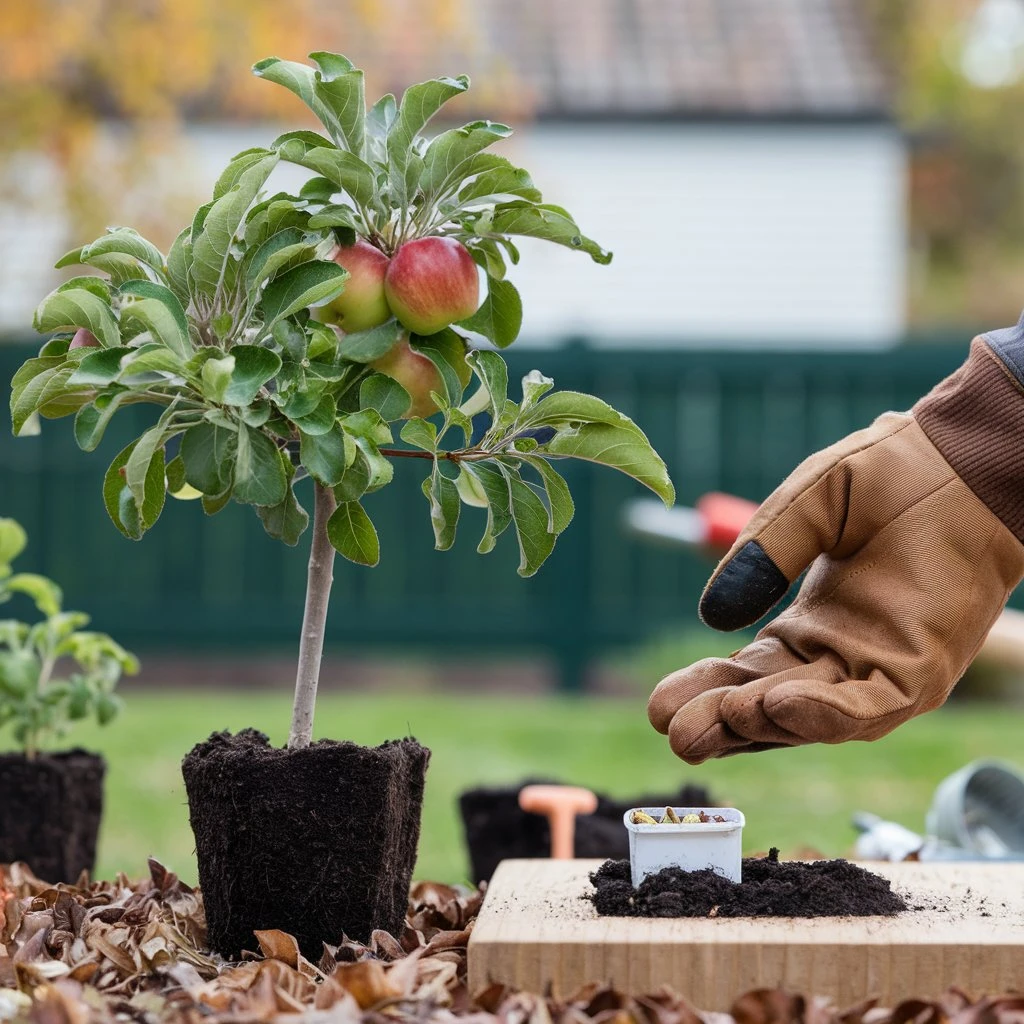
When to Expect Growth Milestones
Once you have successfully planted apple seeds, it is important to understand the growing season. The first major precaution is germination. Apple seeds usually germinate within 2 to 4 weeks after planting. During this time, the seed breaks its dormancy and sends forth the first pale green shoots.
As the seedlings mature, they will develop their first true leaves. This allows them to start developing stronger roots and growing stronger. Crops at this stage need care—proper sunlight, water, and periodic pruning—for optimal growth.
From Sprout to Sapling: What to Watch For
From sprout to sapling, growth accelerates over the course of one to three years. The first noticeable change is the thickening of the stem and the development of a more defined trunk. The apple tree will also start producing multiple branches, setting the foundation for its future structure. During this phase, it’s important to monitor for pests or diseases that could hinder growth.
While the tree may not yet have a full canopy, its increased height and strength signal that it’s moving towards becoming a sapling.
Understanding the Timeline for Fruit Production
Being practical about fruit-growing is key. Usually, it’s a 6-10 year wait for trees planted from seeds to bear their initial fruit. The process from seed to apple is slow but rewarding. Understanding how to grow apple seeds and being patient with the how to plant an apple tree from seed process is key to seeing those first blossoms and eventually harvesting fruit.
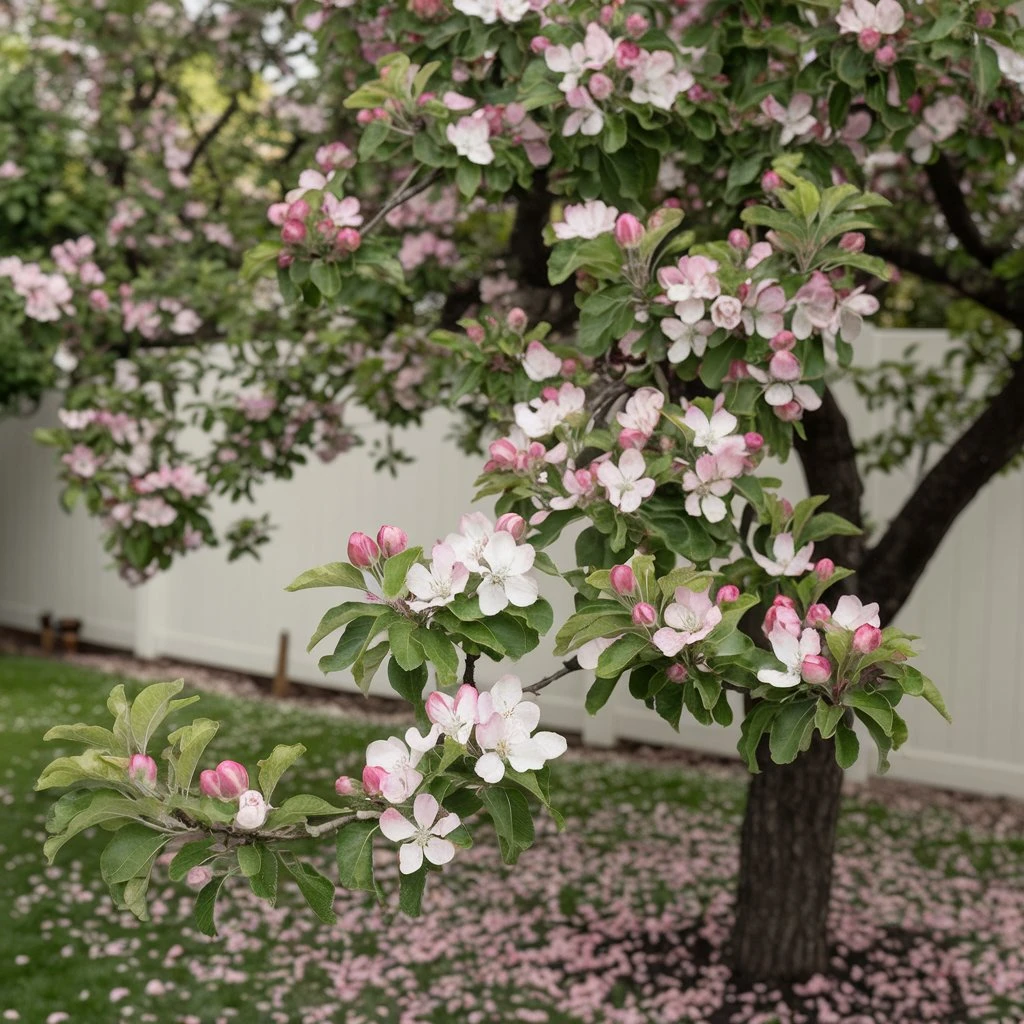
Tips for Long-Term Success
Pruning Techniques to Shape Your Apple Tree
Trimming plays a key role in keeping your apple tree healthy and nicely shaped. Proper trimming helps foster robust, even growth while warding off disease. Start by taking off any branches that are dead, hurt, or sick right when the tree is young. Making the tree look good also boosts air circulation, which is needed to lower the chance of getting a fungus problem.
As your tree grows older, snip carefully to shape its crown and push well-spaced branches. Trimming fresh branches can wake up the growth of side twigs, making the tree strong. Strive for a clear middle, letting the sunlight touch the tree’s insides. This technique supports how to grow apple seeds into a flourishing, productive tree.
How to Fertilize for Healthy Growth
Giving your apple tree food boosts how well it grows. Start by picking a well-rounded food source, packed with nitrogen, phosphorus, and potassium – all vital for the health of your tree. Feed your tree in early spring, as new leaves start to pop out. This way, your tree gets the right nutrients to produce sturdy, healthy branches.
As the tree gets older, use a slow-release fertilizer for steady nutrition during growth time. Be careful! Too much fertilizer can harm the tree, making it weak or unbalanced. The right amount of fertilizer is key when you’re figuring out how to plant an apple tree from seed. It helps the tree become healthy and fruitful.
Building Resilience Against Harsh Weather
Apple trees can’t handle extreme weather, too cold or too hot. They need some careful steps to stay strong. When winter’s coming, cover the trunk with burlap or tree guards. This helps avoid cracks due to frost. In a hot summer, give it plenty of water so the earth stays wet and the roots don’t dry up.
Think about putting your apple tree where it gets some protection from strong winds or intense sunlight. Good mulching near the tree’s base is beneficial. It keeps moisture in the soil when it’s too dry and balances soil heat during very hot or cold weather.
By integrating these strategies into your how to grow apple seeds journey, these tactics should be in your game plan. They’ll keep your tree strong and fruitful. Cut back branches, feed well, get ready for weather issues. Your apple tree will prosper for many years ahead.
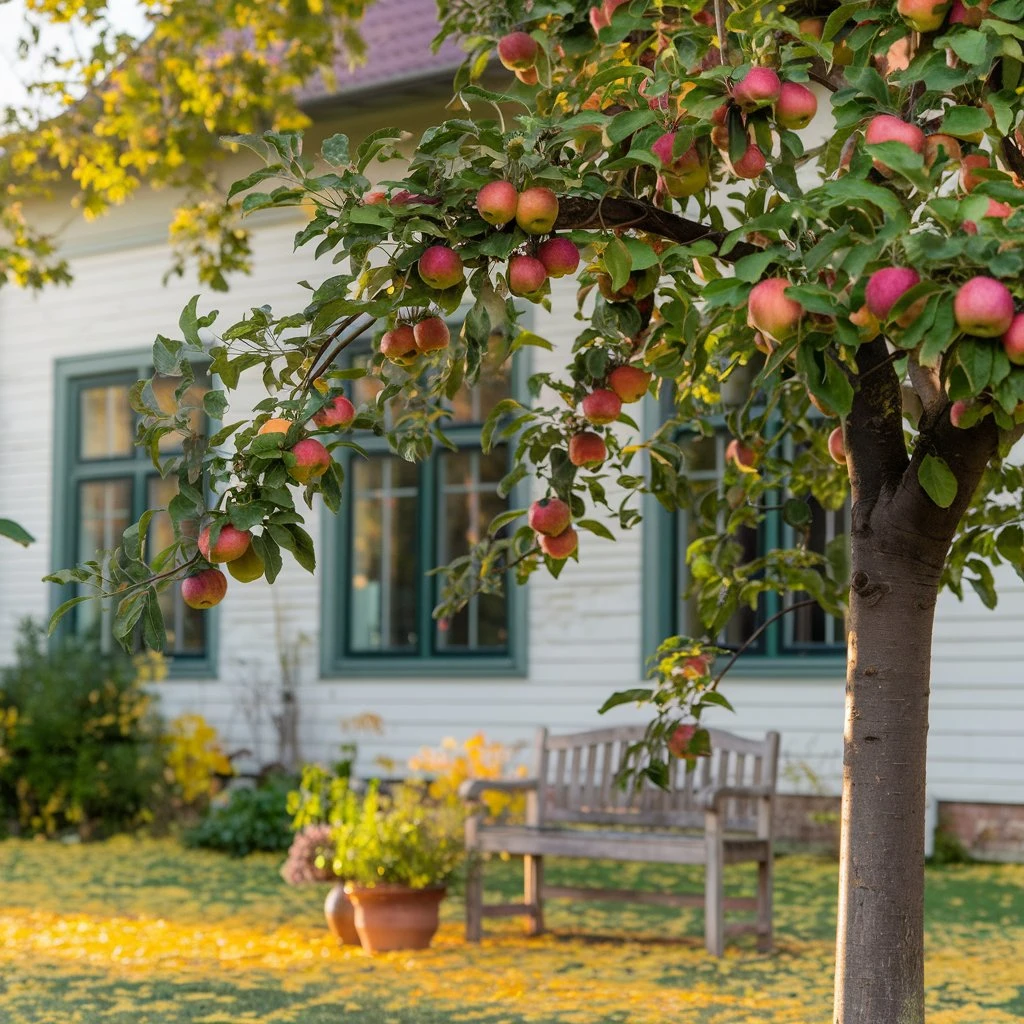
The Delight of Cultivating Your Own Apple Tree
Growing your own apple tree is a deeply rewarding experience, one that connects you to nature and provides a sense of accomplishment. From the excitement of how to grow apple seeds to watching your sapling mature into a tree capable of bearing fruit, every stage is filled with anticipation. The patience required during this journey, as you nurture the tree from seed to maturity, fosters a sense of fulfillment. The moment your tree blooms and produces fruit, it serves as a concrete reflection of your commitment and nurturing efforts.
For many, growing an apple tree is more than just cultivating fruit; it’s about the experience of watching something flourish over time. The tree becomes a living part of your garden, offering shade, beauty, and, eventually, delicious apples.
Next Steps for Thriving Trees and Abundant Harvests
Focus on consistent maintenance to ensure that your apple orchard thrives and produces a bountiful harvest. Learning how to grow an apple tree from seed is just the beginning; Ongoing maintenance is essential. Prune regularly, manage pests and diseases, and give your tree the nutrients it needs.
As your tree grows, pay attention to the water and sunlight it needs. Apple trees are resilient, but need attention, especially when they begin to produce fruit. Monitor your tree’s growth, and adjust management practices as necessary to support its long-term health and productivity.
With patience, perseverance and proper care, you will be rewarded not only with beautiful foliage and healthy branches but also with more apples in years to come The journey from seed to harvest is a very interesting endeavor for the gardener.
Check out our latest article for more insights, and follow us on Facebook for updates! and connect with us on Instagram, Pinterest, and YouTube for more inspiration
By: Mark


